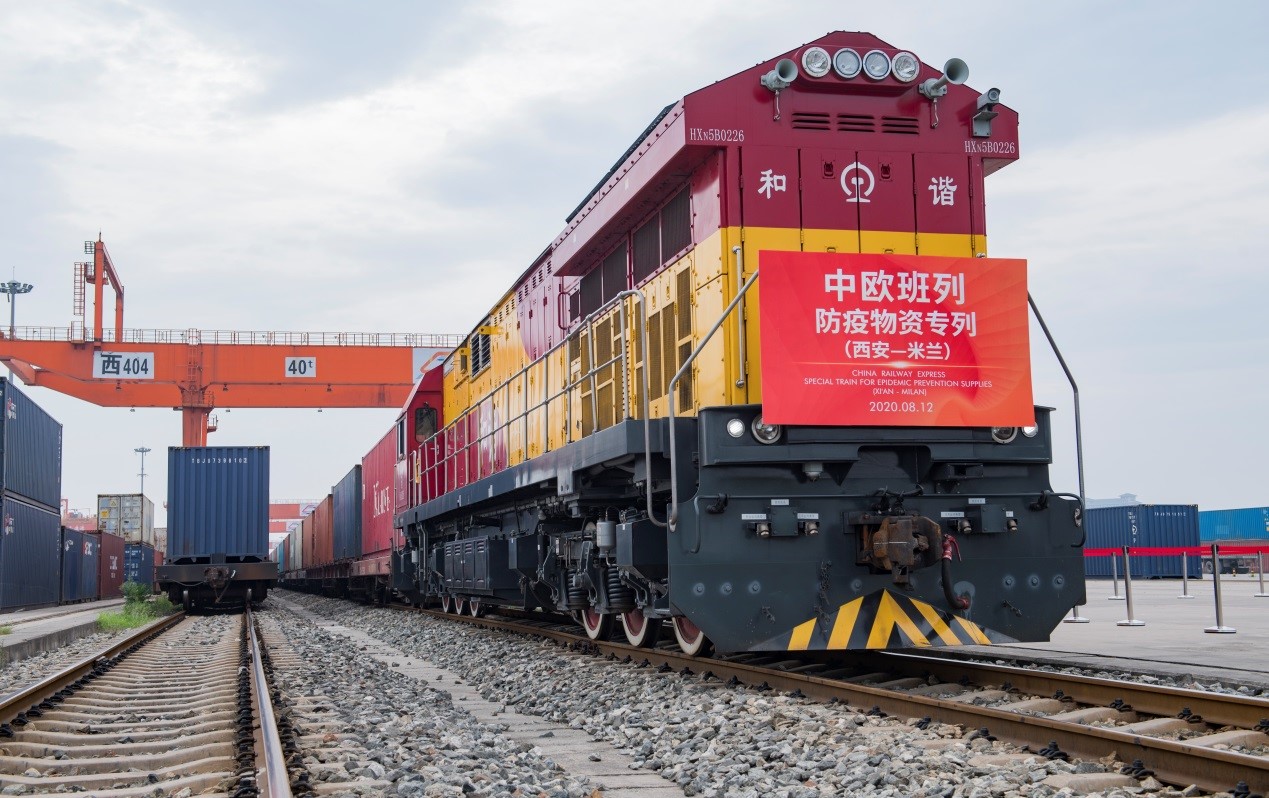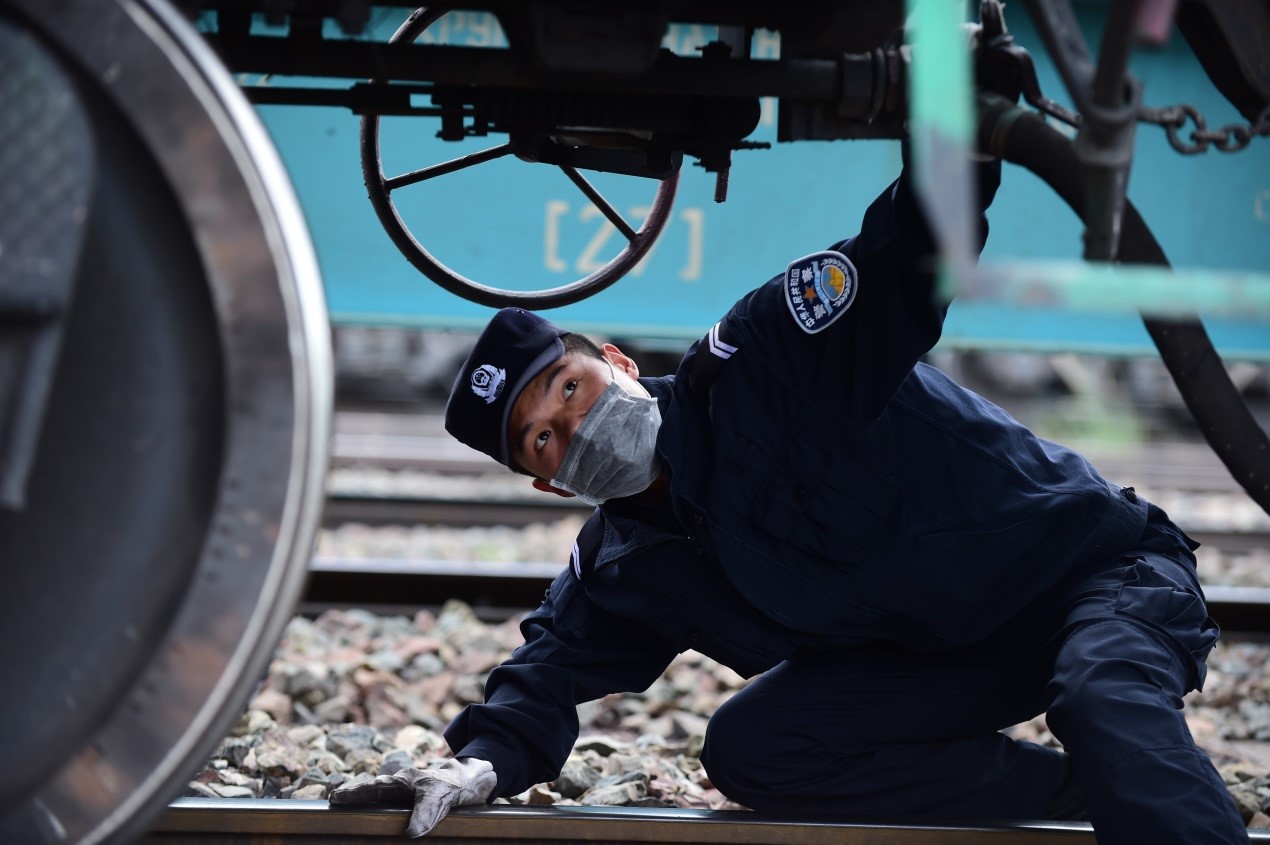China-Europe freight services contribute to global intermodal transport

China-Europe freight train No. 75061 departs from Xi’an, northwest China’s Shaanxi province for Milan, Italy, carrying 368,300 pieces of masks and 949,000 tons of melt-blown fabrics, Aug. 12. People’s Daily Online/Yuan Jingzhi
Given the rising uncertainty in foreign trade, as well as the surging instability of global industrial and supply chains, China-Europe freight services have become a major logistics channel that ensures the trade between the two places. It maintains unimpeded international cooperation on COVID-19 response, and the flow of living and production materials.
In the first seven months of this year, the freight service has made 6,354 trips, transporting 574,000 TEUs (twenty-foot equivalent units), up 41 percent and 46 percent, respectively. The record of monthly trips have been renewed for consecutive five months. A total of 1,232 trains were put into operation in July, the highest monthly figure ever.
The China-Europe freight trains have opened a “green life channel” on the Eurasian continent, realizing growth of both trips made and cargo volume against headwinds.

Cargos are being handled at China-Kazakhstan Lianyungang Logistics Cooperation Center, east China’s Jiangsu province, April 9. People’s Daily Online/Wang Chun
On July 31, the China-Europe freight train X8020 carrying 100 TEUs departed from Yiwu, east China’s Zhejiang province for Madrid, Spain. It was the 400th China-Europe freight train departing from Yiwu this year. The train’s total cargo volume expanded by 211.1 percent year-on-year in the first seven months of this year.
Six days earlier, Jinhua, another city in Zhejiang province, sent its 100th China-Europe freight train of this year that carried 100 TEUs of cargos to Minsk, Belarus. It sent 128.66 percent more of cargos from a year ago.

A police officer of an immigration inspection station in Alashankou, northwest China’s Xinjiang Uygur Autonomous Region inspects an outbound China-Europe freight train, June 10. People’s Daily Online/Li Kangqiang
Thanks to a new international land-sea trade corridor, the China-Europe freight service is now seamlessly connected with the international rail-ocean intermodal trains. They make the largest export channel for China’s eastern provinces, autonomous regions and municipality.
In the January-July period, a total of 2,109 rail-ocean intermodal trains have been running on the new international land-sea trade corridor, up 79.9 percent from a year ago. The scope of cargos also expanded from porcelains and panels to over 300 kinds, including auto parts, computer parts and parallel-import cars. The freight service now covers all major ports in Southeast Asia and Northeast Asia, and connects 203 ports in 83 countries and regions around the world.
To promote high-quality development of the China-Europe freight services, build an effective collecting and distributing system, and accelerate the transition of the trains from a “point-to-point” mode to a “hub-to-hub” mode, China’s National Development and Reform Commission (NDRC) recently allocated 200 million yuan from the central budget to support the construction of transportation hubs in five cities to improve China-Europe rail freight services,including Zhengzhou, Chongqing, Chengdu, Xi’an and Urumqi. The top Chinese economic planner also aims to build a modern logistics hub with strong international influence, promote the efficiency and quality of the China-Europe rail freight services, and offer solid support for the joint construction of the Belt and Road.
“The NDRC will enhance coordination, and, based on the market demand and the development direction of international railway intermodal transport, innovate logistics businesses, and dock with international logistics and supply chain systems, so as to build a lasting and vigorous competitive operation and service system for the China-Europe rail freight services,” said Yan Pengcheng, director of the Department of National Economy, NDRC.


